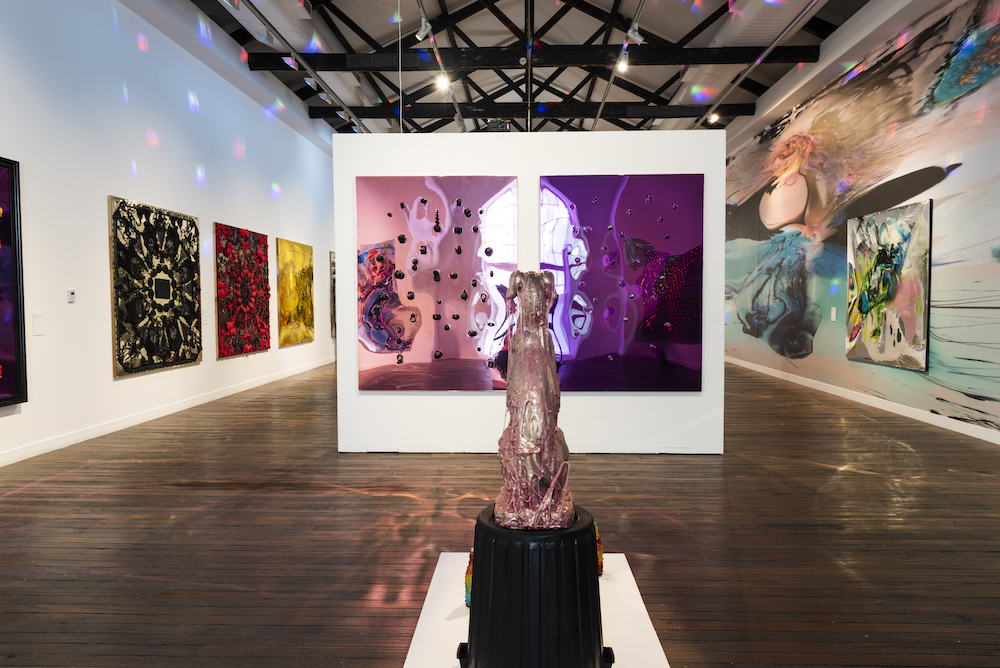
Highs and lows of summer festivals

It’s that time of year again. For some, it’s simply the festive season. But for many young Sydneysiders, it’s festival season, an entirely different beast.
As temperatures soar, so too does anticipation among the thousands of pleasure-seeking festival-goers whose summer will be filled with music, adventure, communion and, quite possibly, ecstasy.
Sydney’s festival culture (with its attendant drug habit) has grown dramatically in the last 30 years, from a makeshift underground phenomenon to a booming industry. What started as a raw and spontaneous rave scene gave rise to the notorious RAT parties of the 80s and 90s, and a swathe of bigger and bolder successors – such as Big Day Out, Vibes on a Summer’s Day, Field Day, and newcomers Subsonic and Falls Fest.
But as festival season 2014 kicks into overdrive, the tragic death of Georgina Bartter at Harbourlife earlier this month has given pause to punters and promoters. Friends of the 19-year-old claim she had taken one and a half ecstasy pills before she collapsed at the festival, surrounded by more than 5000 revelers.
Bartter’s death has triggered renewed debate over the prevalence and the policing of drug culture at music festivals. The tragedy is a haunting reminder of 15-year-old Anna Wood, who died from acute water intoxication after taking ecstasy at an Ultimo rave in 1995.
Predictably, politicians and law enforcement officials have gone on record lamenting the needless loss of another innocent in the so-called War on Drugs.
Inspector Stewart Leggat of City Central Local Area Command issued a statement, warning: “There’s little to no quality control in the production of illicit drugs. Quite simply, you don’t know what you are getting – seeking a synthetic high could result in a serious injury or death.” While Prime Minister Tony Abbott responded to the sad news, insisting, “There is no safe way to use illegal drugs.”
But even with these grim warnings, and the foreboding loss of young life, it is hard to imagine the festival drug culture disappearing any time soon.
The latest National Drug Strategy Household Survey indicates that the proportion of Australians over 14 years who have tried ecstasy has more than trebled since 1993, from 3.1 percent to 10.9 percent in 2013. After cannabis, ecstasy is the second most commonly used illicit drug in Australia.
21-year-old reveler Lucy (surname withheld for anonymity) frequents many popular music festivals, including Field Day, Harbourlife and Splendour in the Grass. She concedes that drugs are ubiquitous at Australian music festivals.
“Before I had ever had drugs, I didn’t realise that it was so common,” says Lucy. “As soon as I had my first pinger, I remember walking around and realising literally everyone here is on drugs.”
Despite the presence of police and sniffer dogs at festivals, many partygoers are finding new ways to subvert authority and avoid detection.
“At Splendour in the Grass, I’ve seen people use some very creative methods to get their drugs inside the festival – not just two or three pingers, but enough for ten friends to take over a three-day festival,” Lucy says. “The effort people make to conceal their drugs is huge. Some girls are using tampons to anchor drugs in their bodies – imagine if the body absorbed a burst parcel of drugs.”
Like America’s prohibition of alcohol in the 1920s, Australia’s strict ban on so-called recreational drugs – such as MDMA (ecstasy), cocaine and amphetamines – has given rise to counterproductive side effects.
As with Prohibition-era bootleg alcohol, black market drugs are not regulated by quality control standards, leaving consumers vulnerable. The prohibition of recreational drugs also promotes heavy and rapid drug consumption in secretive and unregulated ways. Many punters try to outsmart authorities by dosing up on drugs before entering the festivals.
“It’s daunting to know [that police and sniffer dogs] are there,” Lucy says. “It puts pressure on me to try and have extra drugs before I get in the gates, to be as high as possible before the festival – that is a bit unsafe.”
Earlier this year, The National Drug and Alcohol Research Centre gauged the effectiveness of sniffer dog deployment at festivals in a survey of five hundred NSW festival-goers. The study found that sniffer dogs did not deter 62 per cent of respondents from taking drugs.
The study revealed an increasing trend of festival-goers ingesting drugs outside the venue, with 2 in 5 respondents opting for less odorous drugs, such as ecstasy and methamphetamine, over cannabis, to escape detection.
In the 20 years since Wood’s death, prohibition and vigilant policing have failed to eradicate illicit drugs and, as new generations of Australians continue to experiment with drugs, the difficult question of harm minimisation remains.
For harm reduction strategies for drug and alcohol users, consult the High-Way Code, developed by The Global Drug Survey 2014.









